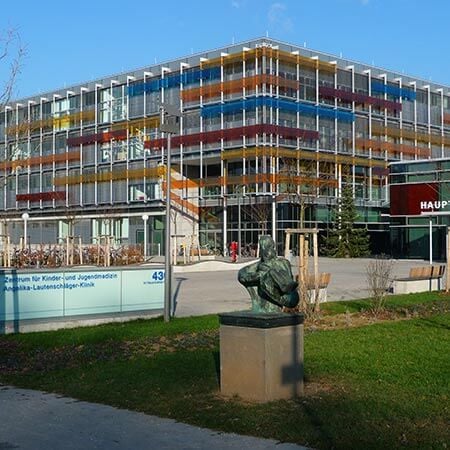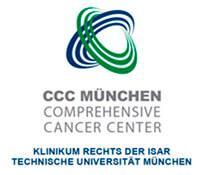Liver cirrhosis is a severe liver disease, but one of the most common pathologies. According to statistics, it is one of the six leading causes of death of people over 35 in developed countries. This liver disease implies extensive damage to the liver, due to which the healthy tissues die gradually. Violation of the liver tissue structure leads to the disturbances in liver function.
Content
- Overview
- Why liver disease develops
- Types of liver cirrhosis
- Is liver cirrhosis as dangerous as liver cancer?
- Symptoms
- Diagnostics
- Treatment principles
- Treatment tactics
- Prognosis
- Where to undergo treatment for liver cirrhosis?
- The cost of treatment of liver cirrhosis
- How to go for treatment abroad?
Overview
Cirrhosis implies irreversible changes in the liver. The liver loses its ability to function. Most often, cirrhosis arises as an outcome of chronic hepatitis C and alcohol abuse.
Liver cirrhosis is the final stage of many liver diseases, including chronic hepatitis, alcoholic and non-alcoholic fatty liver disease. It is a process of diffuse formation of connective tissue, which leads to disruptions of liver functions.
Liver cirrhosis is irreversible. Drug and non-drug treatment of people with cirrhosis is aimed at preventing the progression of the pathology and the development of complications.
The prevalence of chronic hepatitis, fatty liver disease, and liver cirrhosis is increasing. Liver cirrhosis is becoming not only medical but also a socially and economically significant problem, especially among people of working age.
Why liver disease develops
The etiological factors for disease’s onset are:
- Alcohol abuse
- Viral hepatitis C or hepatitis B
- Congenital metabolic disturbances
- Contact with toxins at work or place of residence
- Biliary tract infections
- Dysfunction of the heart and/or blood vessels
In many patients with cirrhosis, liver disease occurs due to the influence of several factors at the same time. The most common is a combination of hepatitis and alcohol intoxication. In about a third of people with cirrhosis it’s not possible to establish what exactly has triggered the pathology.
Types of liver cirrhosis
Specialists identify several types of liver cirrhosis. The factors that lead to the development of liver disease can be determined as:
- Viral – caused, for example, by hepatitis C and various biliary tract infections
- Toxic – caused by the consumption of alcohol, toxins found in food products, and other toxins that affect the body
- Congenital – represents the consequences of certain liver diseases with genetic predisposition
There’s also liver cirrhosis of uncertain etiology. We are talking about those cases of people with cirrhosis, where it is not possible to determine the cause of liver disease.
Is liver cirrhosis as dangerous as liver cancer?
Among serious liver diseases, liver cirrhosis and liver cancer are of particular concern. They pose a threat to a patient's health and life and therefore require a comprehensive approach. We should understand the difference between liver cirrhosis and liver cancer. With their interconnection, similarity, and destructive effect, these liver diseases are different.
Liver cirrhosis doesn’t go beyond the organ, but liver cancer can spread to other organs.
At the initial stages, the inflamed liver tissue can be removed, allowing people with cirrhosis to continue a healthy life. In liver cancer, efficacy of surgery is limited. Resection of liver tumor involves removing related healthy tissues. Sometimes, the entire liver should be removed and a person requires liver transplant.
Next, liver cirrhosis is often caused by alcohol abuse, hepatitis, infections of the biliary tract, or heart failure. The possible causes of liver cancer can be the excess of iron in the body, hepatitis of any group, viral infections, or liver cirrhosis itself.
Therapy for liver cirrhosis implies the use of hepatoprotectors and a strict diet; liver cancer is treated mainly with chemotherapy or chemoembolization. With cirrhosis, the process can be slowed down significantly. With liver cancer, the prognosis is much more unfavorable.
Liver cancer develops against the background of cirrhosis. According to research, the risk of cirrhosis’s transformation into liver cancer is up to 60%. So, many liver cancer patients are also people with cirrhosis. This liver disease progresses very quickly, so early detection and control of affected tissue are very important.
If a person does not have cirrhosis at the time of liver cancer development, then the 5-year survival rate exceeds 50%. With numerous metastases, liver cancer is inoperable, which is why only symptomatic treatment is carried out.
Another difference between cirrhosis and liver cancer is the symptoms. The distinction is explained by the mechanism of the development of liver diseases. Liver cancer is connected with malignant transformation of tissues, leading to the formation of a tumor.
Symptoms
Liver cancer is somewhat similar to liver cirrhosis. It can be simply explained by the fact that both liver diseases influence the same organ. Dissimilarity lies mainly in the symptoms.
With cirrhosis, symptoms have diverse origins, thus, the symptoms vary. Symptoms of cirrhosis are usually poorly expressed. However, some patients with cirrhosis may experience specific symptoms. The most common are:
- Fatigue, daytime sleepiness, and insomnia
- Decreased appetite, unstable stools, and bloating
- Yellowing of the skin and spider veins or varicose veins of the esophagus
With cirrhosis’s progression, the initial symptoms are joined by:
- Jaundice
- Ascites
- Muscle atrophy
- Varicose veins of the esophagus
Diagnostics
Experts recommend visiting a healthcare practitioner as soon as you notice symptoms of liver cirrhosis.
A patient will undergo laboratory tests. After receiving the test results, a patient is referred to a gastroenterologist or to a doctor specializing in liver diseases – a hepatologist. In some cases, if symptoms of hepatic encephalopathy are detected, patients need to visit a neurologist, as hepatic encephalopathy implies disruptions in brain functioning.
Also, when making a diagnosis, anamnesis, and instrumental diagnostics are carried out, the main of which are:
- Biochemical studies (show how well the liver functions are, and help to find out if activity of the liver is impaired)
- Coagulogram testing (shows if disturbances of blood clotting are present)
- Fecal tests (help to identify latent bleeding in the stomach and/or intestines)
- Serological markers of viral hepatitis (used to clarify factors that could lead to the development of liver disease)
- Creatinine blood test
Treatment principles
Liver cirrhosis is difficult to treat. Since there is no specific remedy for this liver disease, all the efforts of doctors are aimed at fighting the underlying liver disease, including the prevention of its complications.
For the treatment of liver cirrhosis, it is important to establish its stage, to assess the degree of liver damage and the overall health condition of the patient.
Thanks to the liver's ability to regenerate, with cirrhosis, treatment started early will allow keeping a healthy liver. The advanced stage of cirrhosis implies poor regenerative potential of the organ. Treatment at this stage is aimed at preventing dangerous complications. In many patients with cirrhosis complications it is impossible to restore liver function and a liver transplant is needed.
If a liver transplant is needed, doctors will provide a patient with all the necessary information.
Treatment tactics
If a patient is diagnosed with cirrhosis, treatment can be carried out in different ways. The choice of a specific therapeutic tactics is largely determined by the stage at which the liver disease is diagnosed. However, modern medicine allows coping with cirrhosis’s causes mainly.
A radical method of treatment of liver cirrhosis is a liver transplant. It is used if there is a threat to the patient's health and life. In all other cases, medicinal methods are used. As a rule, the patient should adhere to a strict diet. In case of cirrhosis caused by alcohol consumption, the intake of alcohol must be excluded.
In viral hepatitis, antiviral agents are used, in particular, pegylated interferons. In hepatitis of the autoimmune origin, immunosuppressants may help. In biliary cirrhosis, which is another autoimmune pathology, ursodeoxycholic and obeticholic acids are administered.
Patients with cirrhosis can also receive stem cell therapy. It’s shown to improve a patient's health condition and accelerate the recovery of damaged liver.
Prognosis
Not so long ago, patients with cirrhosis didn’t have many treatment options, and most people with cirrhosis died within a few years from the development of liver failure, and other complications.
Fortunately, medicine is advancing. Today, with timely diagnostics and immediate therapy, the prognosis has become more favorable. People with cirrhosis thrive for many years after undergoing treatment.
Timely diagnosis making doubles the chances of life prolongation. Therefore, patients with cirrhosis need constant supervision and supportive therapy to compensate for liver failure.
If you have the slightest suspicion of liver disease, you should immediately see a healthcare professional.
Where to undergo treatment for liver cirrhosis?
To date, treatment for liver cirrhosis is not carried out in every clinic. Certain procedures, such as liver transplant surgery, are very complex therapeutic methods that are used in the best hospitals in the world. Among the best hospitals for treatment of liver cirrhosis are:
- University Hospital Heidelberg, Germany
- University Hospital Bonn, Germany
- Primus Super Speciality Hospital New Delhi, India
- Rambam Health Care Campus Haifa, Israel
- Memorial Sisli Hospital Istanbul, Turkey
You can find more information about the hospitals on the Booking Health website.
The cost of treatment of liver cirrhosis
The prices for the treatment of liver cirrhosis depend on the chosen treatment method. In particular, when it comes to diagnostics and conservative therapy, the cost of treatment amounts to 3,000 EUR.
The most expensive treatment methods are liver transplant and stem cell therapy. The cost of stem cell therapy for people with cirrhosis is about 17,050 EUR, and the price for liver transplant is somewhat in the same range.
Hospitals that perform treatment of liver cirrhosis report the exact cost of treatment only after the examination, when it is clear what procedures to control the disease are required.
How to go for treatment abroad?
If you have any related health problems, Booking Health will provide all kinds of assistance in organizing treatment abroad. Booking Health lets thousands of foreign patients discover the world’s best hospitals.
Since the list of necessary procedures will be clear only after the doctors confirm the diagnosis and draw up an individual therapy program, most prices out there are approximate. Booking Health offers treatment programs in different countries with fixed prices and insurance against complications.
Send a request, and Booking Health consultants will contact you as soon as possible, answering all your questions regarding being healthy.
Authors: Dr. Nadezhda Ivanisova, Dr. Sergey Pashchenko














